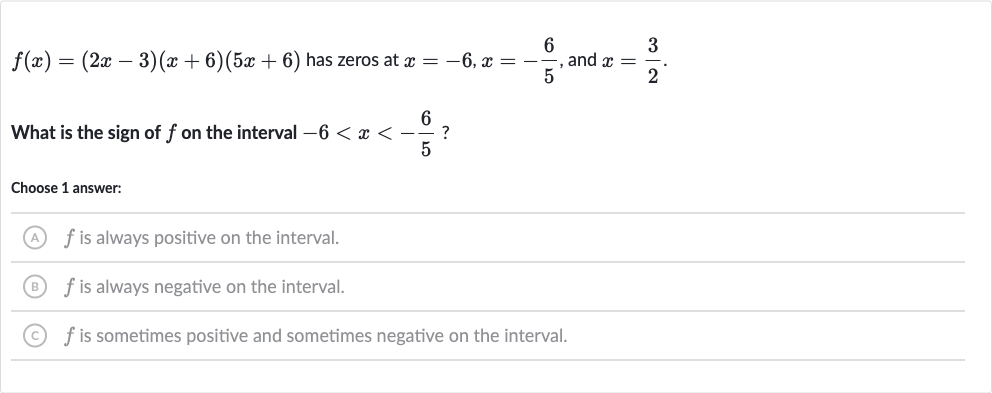Full solution
Q. has zeros at , and .What is the sign of on the interval ?Choose answer:(A) is always positive on the interval.(B) is always negative on the interval.(C) is sometimes positive and sometimes negative on the interval.
- Identify Sign Changes: Since has zeros at , , and , we know that the function changes sign at each of these points.
- Test Interval: We need to test a value between and to determine the sign of on that interval. Let's pick , which is between and .
- Calculate : Plug into to see the sign: .
- Calculate : Plug into to see the sign: .Calculate each term: , , .

